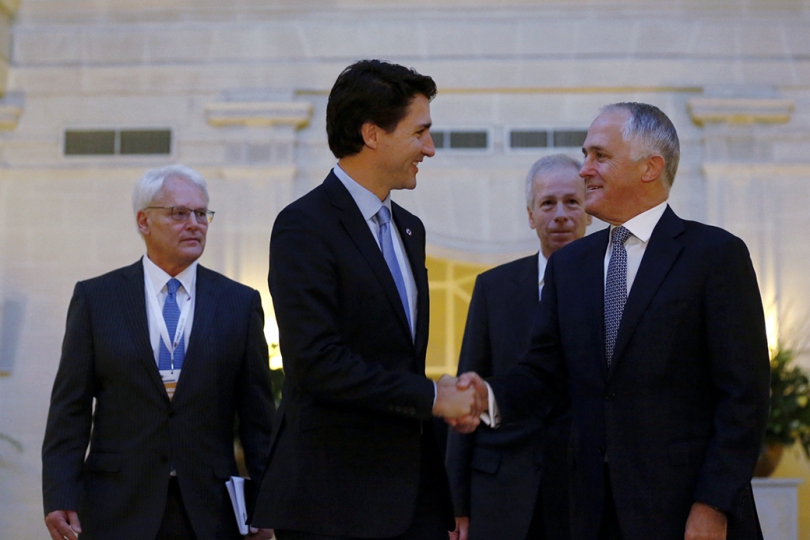
Photo: Screen-Shot-2016-03-30-at-11.17.25
The value of global standards in city management
12 March 2016
by Jonathan Andrews
US editor, Tom Teodorczuk, spoke to Dr Patricia McCarney, President and CEO of the World Council on City Data (WCCD), Director of the Global Cities Institute and Professor of Political Science at the University of Toronto
Can you tell me more about ISO 37120 and how the World Council on City Data (WCCD) came to lead its global implementation?
ISO 37120 is the first international standard for cities and it’s the first time that ISO has ever had a standard dedicated to city data. ISO has standards for automobile parts and light bulbs for cellphone components and so on, but cities have not been part of the ISO work in the past. In 2012, we approached ISO in Geneva and advised them that we had been developing a set of indicators for cities since 2006, developing standardised definitions and methodologies. At that time we had built the Global City Indicators Facility (GCIF) at the University of Toronto, working with the World Bank that had identified the serious gap in data for cities and the need to develop a common language for cities. Once you have standardised data for cities, cities can talk to each other and learn from each other. As part of our platform, we now position data as the universal language for cities.
Can you talk about the process of establishing ISO 37120?
It took my colleagues and I at WCCD two years to guide the passage of ISO 37120 through to publication inside the ISO. Cities helped to develop the indicators themselves and countries voted on a series of drafts during the ISO process. We reached consensus on 100 indicators with standardised definitions and standardised methodologies. These were reviewed and vetted over the two years. It went through several revisions with hundreds of comments from voting country members through the ISO process. ISO37120 was published in May 2014 and introduced at the Global Cities Summit in Toronto at that time.
The Global City Institute served as an advocate for the Sustainable Development Goals (SDGs) which the UN member states adopted last September, one of which–Goal 11–directly addressed cities. What are the biggest challenges for the SDGs going forward?
Now that Goal 11 has been included as part of the SDGs, the biggest challenges right now for successful implementation of the SDGs is how cities and nations will create and define Goal 11 and the other urban-related goals of the SDGs, such as clean water and sanitation [Goal 6], resilient infrastructure [Goal 9], and combatting climate change [Goal 13]. Cities and nations need to work together to define the targets and more specifically determine indicators for data that will support measurement in informing movement towards the SDG targets. In the past, data for cities has been quite weak and cities weren’t represented so that’s why the SDGs are so important and that’s where the WCCD and ISO 37120 comes in. In the case of the Millennium Development Goals (MDGs), cities’ voices just hadn’t come together well enough. The population for people living in cities will increase to approximately 5 billion in 2030 so those kinds of numbers are driving the addition of Goal 11 in the SDGs.
We have to pay attention to the very large cities. The largest city right now, if you take proper city boundaries, is Karachi with over 15 million people. But if you measure by urban areas, Tokyo is considered the largest city in the world with some 35 million people. That’s the size of a country! So you really do need not only countries to adopt the SDGs but for cities to collaborate more closely.
How will ISO 37120 and the SDGs ensure global priorities are more closely met?
High-calibre data allows cities and countries to manage progress in not only reaching Goal 11 targets, but also to evaluate investment in infrastructure and investment in poverty alleviation, to evaluate water consumption in cities and provide access to safe and sustainable transport systems. For example, Goal 11.6 of the SDGs is measuring air quality and improving waste management. These are both sound metrics in the WCCD’s work with cities in reporting under ISO 37120 indicators. Also, through the standard we’re monitoring cities’ greenhouse gas emissions under the global protocol for communities so aptly developed by ICLEI and other partners of the WCCD. More countries are adopting ISO 37120 and will therefore be in place at the national level to assist countries and their cities to better measure progress towards SDG 11 and other urban related SDGs.
The administrative and management structure of WCCD strikes me as unique. Was it intentional to have this as your unique selling point?
Yes I agree and yes it was intentional. In 2006 and 2007 when we were first thinking about working this through, we looked at many indicators and programmes throughout the world. So many indicators programmes fail as they are not in line with city needs and priorities. Perhaps what made us different is what we might term a Canadian way of operating!
Instead of just setting something up globally and trying to implement it locally, we actually asked the cities what they wanted to measure and what they were already measuring.
We went to cities and asked: ‘What are your priorities and why are you measuring this and not this?’ We made sure it was useful to cities and resonated with what cities were already measuring.
The other thing that distinguished us was testing KPIs [key performance indicators] with a pilot group of cities that spanned both developing and developed country cities to determine a more global set of indicators. We then started rolling it out and by 2012 we had a remarkable network of 255 cities across 83 countries working and refining this standardized set of indicators.
So it was asking cities, testing it around a global set of cities and building high-quality data. Our slogan therefore, ‘Built by cities, for cities’ stems from this decade of history in working with cities across the globe and guides our work today.
How do you take into account the differentiations that exist in each country?
Even to measure population across cities is very difficult because of different boundaries and different definitions of city administrations. To measure something as simple as the number of firefighters per hundred thousand, the definitions were uneven. So some cities measuring firefighters include all the volunteer firefighters while other cities only include the firefighters on the payroll. So we evened out the definitions and methodologies and we ended up with an ISO standard with 100 indicators. Those are across 17 themes. Cities can group themselves into peer groups for global comparative frameworks so that cities in Africa might only want to compare their data with other cities in their region or income group. Cities in North America might want to only compare themselves with peer cities in their same demographic size range. Depending on the theme (for example climate change) cities might prefer to group themselves into a similar peer group by climate type. The WCCD platform is designed to help with differentiation according to a city’s choice.
How effective do you think cities have historically been at using data?
At the national level we have pretty good stats in place. But at the city level in many countries, it has been quite weak until the last few years. Today, the first 20 global cities have been certified against ISO 37120 and part of the Global Cities Registry of the WCCD. This data is already posted on an open data platform built by the WCCD www.dataforcities.org. As cities start to conform to the ISO standard, we’re going to have incredible data for the first time. We are now welcoming the next 100 cities to the WCCD and rolling it out.
We invited 20 of the leading cities to test this over the past year from North America, Latin America, the Middle East, Asia, Africa and Europe. Now we’re opening it to all cities and the first cities will convene in Dubai in 2017. The United Arab Emirates, under the leadership of the Executive Council of Dubai, has invited the first cities certified under ISO 37120 to a WCCD Global Cities Summit in Dubai to talk about data and how city data for the first time can start to inform innovation and learning.
What outcomes are you hoping for at the Dubai summit?
We’ re hoping to have a really strong set of thematic reports that will be launched at that event. For example, there will be one on cities and mobility focusing on data analytics and index formation. A second one we are looking at is on urban infrastructure and a multi-governance investment framework informed by comparative city data. We’re looking at a panel on finance and at a panel on safety in cities. So the first release of these analytics and reports will be in Dubai.

Why do you think the Dubai summit will be particularly impactful?
It’s going to be impactful for two reasons. One is on the front of innovation but secondly as the cities have good, comparable data to share with other peer cities–like India or China with their Smart Cities Agenda–that drives investment in infrastructure whether it’s water or sanitation for lower income cities or smart transit in higher income cities. Large companies get involved–for instance smart lighting in the case of Philips looking at Smart Cities in India or smart transit that Siemens is looking at in North America and Europe. Countries are partnering with us right now in part because data for cities hasn’t existed before.
What role does technology play in what the WCCD does?
We launched the WCCD open data web portal in Los Angeles at the beginning of the LA Tech fest last summer–dataforcities.org. A citizen can go on to the portal and ask questions like ‘How healthy is my city?’ ‘How clean is my air?’ or ‘How safe is my city?’ Open data in cities is driving all kinds of hackathons and apps. When Boris Johnson, Mayor of London, opened the data on transit in London, citizens were creating transit apps within the first two weeks of the open portal.
What is your perspective on the rise of smart cities?
It’s early days. When the term ‘smart cities’ first arose, it was really around ICT. It was all technical and about the digital world but smart cities in India and China are helping to re-inform the concept along broader lines to include basic services like water or sanitation and how to improve delivery with more effective technologies in their poorest communities. We’ve been to India, to meet with cities, research think tanks and the National Ministry of Urban Development and we are in the process of establishing partnerships with Indian cities to explore our WCCD data for cities agenda. The timing to build and compile data for Indian cities is significant, not only to help inform the smart cities targets, but more generally to help ensure sound investment and data-driven policy to guide this exciting agenda for cities being introduced by Prime Minister Modi.
What do you see are the most effective ways to increase civic engagement in cities and make citizens better informed?
I come back to data. I do believe that we have constructed the open data portal in such a way that because the data is certified and open and it’s really good data we want citizens to go on and ask those kinds of questions. For example we would love high school students to do a project on ‘How safe is my city?’ and have access to the data that they can write papers on. University and academic research and innovation can be powered by the open data platform.
I believe that if you have good data, you’re going to have very well informed citizens and this builds better government, higher transparency and improved quality of life for citizens.
Mayors and city managers are also empowered by good data because it helps them build the case for better investments in transit and other infrastructure because they have comparable data from other cities to build the case. Open data for cities and this portal we’ve been constructing can help move that whole agenda forward.
What else would you like to see happen in 2016?
Our big hope after COP21 is to have really solid GHG emission data, for instance, and to have mobility data on automobiles and modal split that will develop thinking about lowering carbon in cities across the mobility sector. Those are the kinds of things that we will start to look for in putting the data out in very usable ways for cities to think about in terms of the SDGs. The WCCD has signed agreements with the United Nations Environment Programme (UNEP) and the United Nations International Strategy for Disaster Risk Reduction (UNISDR). The UNISDR is an organisation devoted to resilience and disaster risk reduction and we will be working with UNISDR, UNEP and other partners to help to develop the new ISO standard on resilient cities. We are also now developing a new standard on indicators for smart cities within the ISO. This ISO ‘family of city standards’ is high on our agenda for 2016. Implementing ISO 37120 in cities worldwide is a central part of our 2016 work programme here at the WCCD.
It seems that the importance of effective deployment of data by cities is an argument that grows stronger every year?
Yes and what we see happening is that national governments are a large part of this rising importance of data for cities. This is new. Cities were not always seen as a policy priority by national governments, but the recognition of cities driving national economic growth and the need to devote investment to city building to support this is a rising agenda in countries across the globe. Here in Canada, cities were not on the radar of the last government. But the new government in Canada, headed by Prime Minister Trudeau, has committed to massive infrastructure investment for cities because they understand the importance of cities to their economic development trajectory for the next ten to fifteen years. Getting it right in cities depends on good city-level data. The timing couldn’t be better. We’re seeing this understanding emerging in India, in South Africa, in Brazil and across the US under the dynamic leadership of former Mayor Castro from San Antonio, Texas, who is leading major national investments in cities today under President Obama’s administration. Under the Turnbull Government in Australia, there is a new Minister for Cities. Melbourne is a member of WCCD and we hope to see Brisbane and other cities help drive a data-driven agenda with the new Ministry of Cities.

Is it still the plan for WCCD to establish more regional offices?
Yes but in cautious steps. We are considering location and timing as we grow. We now have an office in Beijing in the Smart City Innovation Lab part of the Ministry of Housing and Urban-Rural Development (MOHURD). China is one of the countries adopting ISO 37120. We are also considering offices in other regions where the interest and take-up is particularly rapid.
What are your future ambitions for WCCD?
Our ultimate hope is to build a very robust database on cities with the WCCD portal becoming more and more populated by data from hundreds of cities worldwide. Imagine the incredible database that we could have, open to mayors, city managers and citizens alike,to UN partners and corporate partners, and to nations driving investment in cities. As cities are increasingly ISO 37120 certified, it becomes easier for countries to measure success in terms of the SDG targets. I hope the SDGs would help to propel better data for cities through ISO 37120 and be a foundation for expansion of the open data portal of the WCCD.






